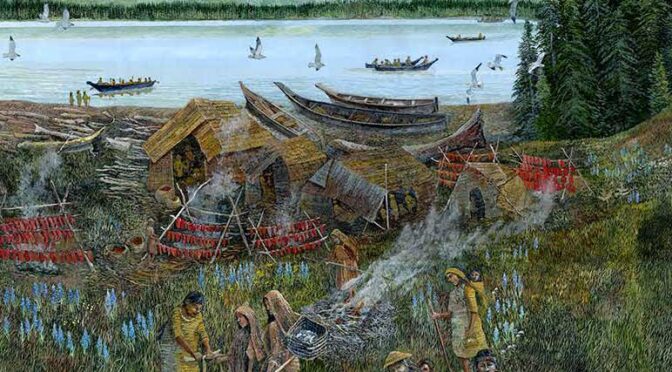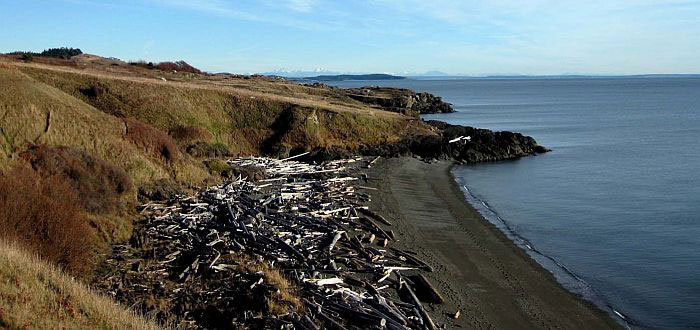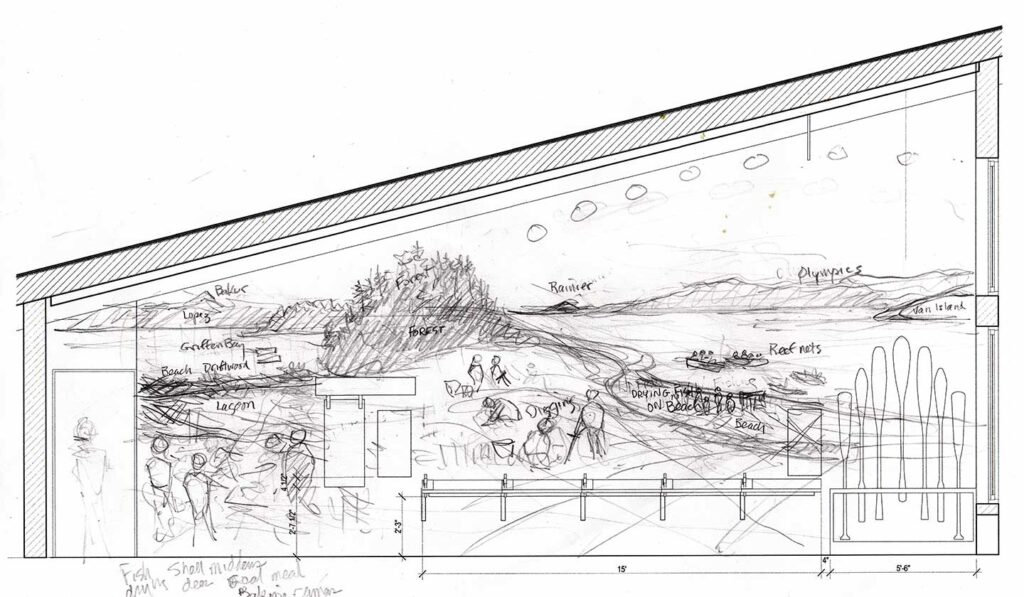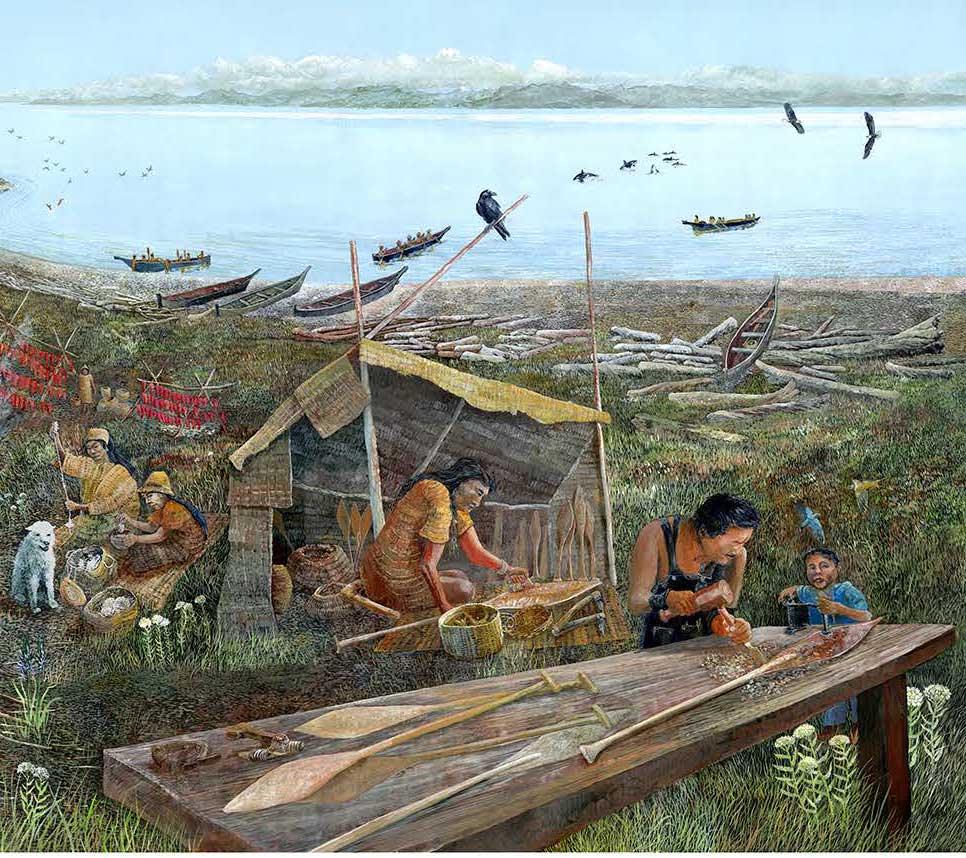Click images to enlarge. A 35-foot long wall doesn’t shrink well to a little screen.
I finished a fun project this past week. I got to create a little world of it’s own on what will be a 35′ wall. I grew up in a museum, you see, where both my parents worked with a staff of curators and writers, artists and generally amazing people. The museum staff that made huge wall dioramas were my babysitters. And here I am, decades later still deeply passionate about this stuff.
So, I was tasked with coming up with the conceptual design for a new park visitor center, but can’t tell you where it is because this drawing hasn’t even been presented to them yet. Cart before the horse, I know, but it’s the way things work at this level. I still wanted to pass this around because who knows what will happen with potential changes – but I like it just as it is now. And this is just the concept or design phase. There’ll be another contractor doing the production phase where I hope to be the painter. It IS my drawing, after all.
The story I was tasked to create was of a summer fishing camp on the Salish Sea some time, or ANY time within the past 8,000 years before pre-white contact – meaning before 1775.
This means no iron or steel tools, no European clothing. Tribes would have come from miles around to fish here in summer as huge salmon runs hug the shore, so there would be fishermen using reef net style techniques, drying racks on shore and baskets full of fish. Summer is also the time when camas bulbs would have been harvested, dug and then baked for later consumption. Both dried salmon and baked camas were the prime staples of life here. I’ve actually been to this exact place in the 1980’s and watched modern seiners catch tons of salmon so close to shore the wives and girlfriends would yell out the egg their men on. I have a connection here.
So, with all that in mind, I just started drawing, left to right so as not to smudge the paper:
And then all this next.
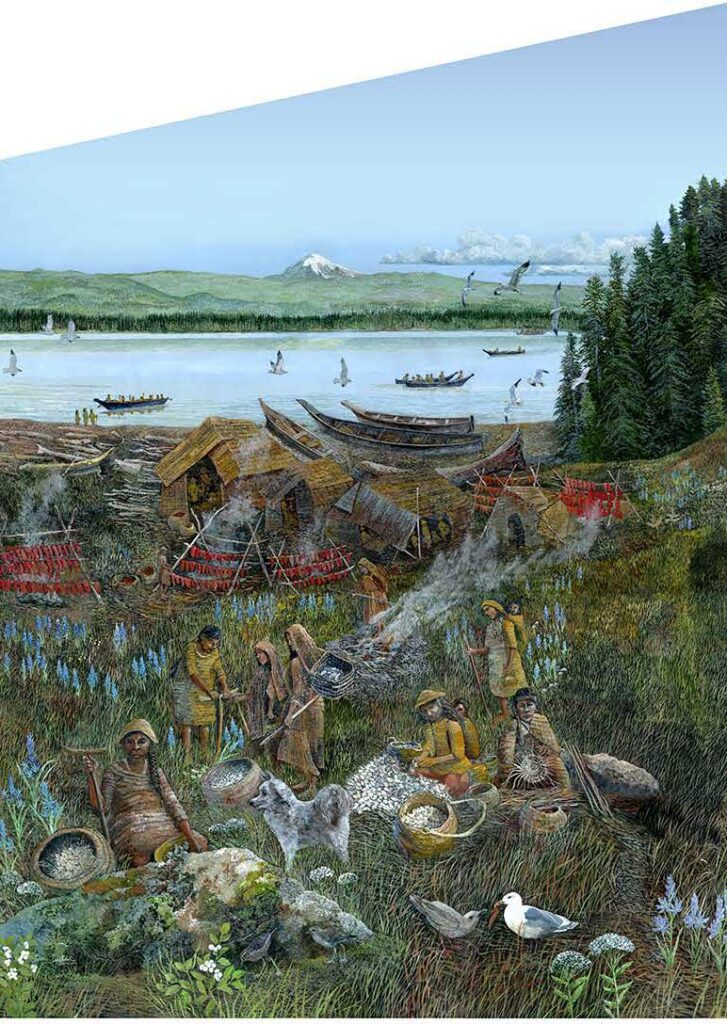
On this left side, racks of drying fish, visiting people chatting it up, wool dogs hanging out. These dogs, a breed now extinct, provided wool for weaving, and tule or cattails provided clothing and tarps for temporary summer shelters.
The rectangles are for interpretive text panels, the long horizontal thing is a reader rail with real examples of tools – matching the tools I used in the mural. I added a wool dog watching a baby strapped up in a papoose bag down low so real kids can see them at eye level. These white woolly dogs were family pets that were sung to and treated as family members. It was fun to find a few photos actually showing them.
I gained valuable references online from Curtis photos, public in the Library of Congress image collections. Here’s one that shows the summer house style and canoe, clothing and baskets all in one image. I used all these parts across the wall.
In reading references for all this, I learned that black-bellied plovers begin their winter migrations from Alaska in summer and stop here to eat the drying seeds of prairie plants, so I added this below the reader rail for kids to see.
On the far right, behind the real paddles, I drew a plank showing the various wood-working tools and someone actually shaving a paddle.
And here’s the reference below for the camas processing, shown in the mural both on the center prairie and in camp showing the underground baking process.
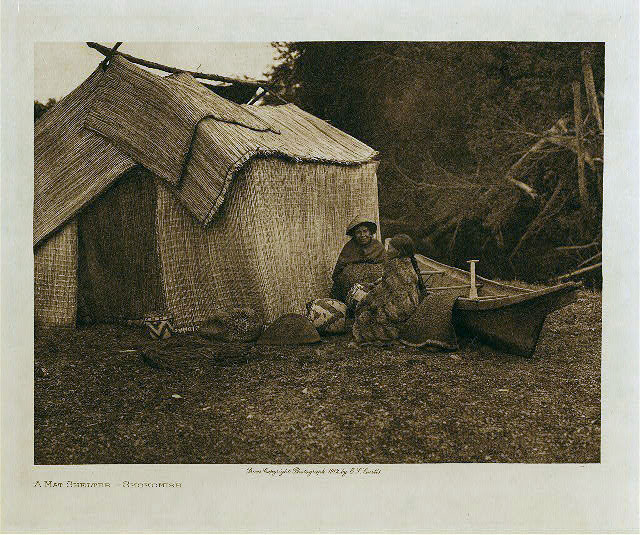
And here’s the entire wall again, 35′ wide. Oh, those moons are the 13 Moons in much of tribal spoken history, representing each moon of the year – and providing (I hope) for a thoughtful reference to the thousands of years this scene took place, again and again during the 8,000 years of tribal life here in the Northwest.
Thanks for reading this week. It was a fun project, probably more fun than actually painting the darned thing.
Larry Eifert
Here’s my Facebook fan page. I post lots of other stuff there.
Click here to go to our main website – with jigsaw puzzles, prints, interpretive portfolios and lots of other stuff.
Nancy’s web portfolio of stunning photography and paintings
And here to go to Virginia Eifert’s website.
